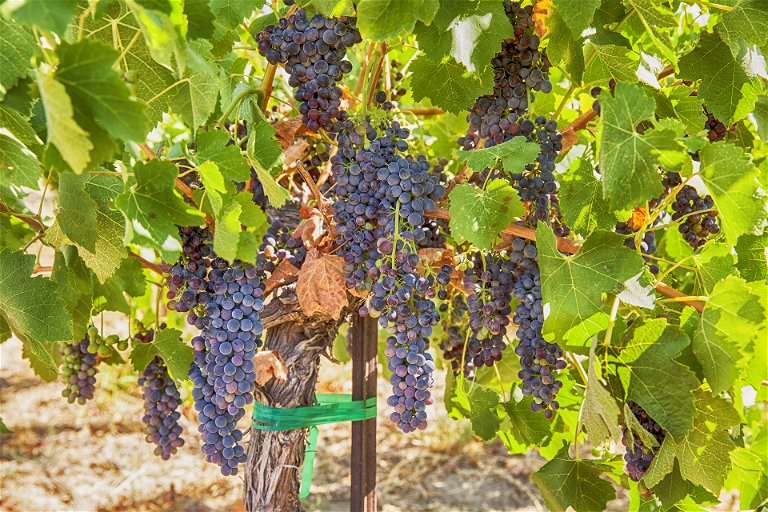Everything you need to know about Red Mountain AVA
The meteoric rise of Washington State's premier wine region is well-justified.
At just about over 4,000 acres (of which 2,700 are planted), Red Mountain AVA (American Viticultural Area) is Washington State’s smallest, but arguably most prestigious, AVA. Formerly an uninhabited stretch of land that seemed inhospitable to grape growing, it has become the epicentre for high-quality fruit in Washington. While Cabernet Sauvignon comprises a large percentage of plantings, anything from Grenache to Sangiovese to Albariño is finding a home here. It has only been an official AVA for just over 20 years, but its meteoric rise is well-justified. Here’s why you should pay attention to Red Mountain and its wines.
History
Prior to 1972, sagebrush bushes were the primary residents of the area. Although located a mere 20 minutes away from the Tri-Cities (Pasco, Richland, West Richland, and Kennewick), development eluded the region until John Williams and Jim Holmes, intrigued by the viticultural research being conducted at Washington State University, saw potential. Within three years, they located sources of water in this desert land, installed basic infrastructures such as electricity, and planted the first vines in 1975. The quality of the fruit drew others to the region, and Red Mountain became an official AVA in 2001. While bigger names in the wine industry, such as Antinori and Terlato, have started estates in Red Mountain, the majority of wineries remain family-owned.
Terroir
Calling the AVA a “mountain” is a bit of a misnomer; the area peaks at about 1,400 feet in altitude. “Red” is also a bit of a head-scratcher, given the green landscape, but it’s believed to come from the cheat grass that grows amongst the sagebrush. Regardless, the terroir is certainly an ideal place for grape growing. Glacial flooding thousands of years ago left alluvial deposits of soils with high levels of minerals and calcium carbonate, which sit over layers of sand and gravel. The southwest-facing slope guarantees plenty of sunshine, while very little rainfall alleviates any disease pressure attributed to mold or mildew. Large diurnal shifts, sometimes as big as 40 degrees Fahrenheit, ensure grapes retain great acidity. Gusty winds during the year also help regulate temperatures in the vineyard while circulating air, defending vines against frost. To this day, most of the vineyards remain own-rooted, meaning vines have not been grafted onto more disease-resistant rootstock.

Grapes
Most of Red Mountain – about 90 per cent – is planted with red varieties. Mark Ryan McNeilly, the owner and winemaker at Mark Ryan Winery, says the Bordeaux varieties showcase the same structure as in Bordeaux, plus a great acidity that makes the wines, “Unapologetically New World, unapologetically Red Mountain,” as he puts it.
While Cabernet is the largest percentage of plantings (60 per cent), Merlot, Syrah, Cabernet Franc, and others also thrive. Wines from these varieties often show ripe tannins – another hallmark of the region – but Grenache takes a decidedly lighter turn. “It’s Washington’s Pinot Noir,” says Kevin Irving, winemaker at Upchurch Vineyard.

The beauty of making wine in a young region is the opportunity to experiment; in the Ciel du Cheval vineyard, for example, anything from Charbono to Barbera to Pinot Gris is cultivated in 38 different vineyard blocks. It’s not only a study in terroir but a glimpse into what varieties might do best in the face of the climate crisis.
Where to taste
In the AVA itself, there are only a handful of wineries. Some have facilities outside of the designated appellation, while many wineries elsewhere in the state buy fruit from Red Mountain for their wines. Given the small number of tasting rooms, the Red Mountain wine route still feels like a secret. Here are a few places to see for yourself:
This is the winery started by Red Mountain pioneer John Williams. Today, the third generation is at the helm of the operation: grandson Tyler is in charge of winemaking, and his brother, J.J., serves as general manager. Sip on an elegant yet powerful Malbec while taking in the view at their glass-walled tasting room.
This estate led the way for biodynamic farming in Washington State and today both the winery and vineyard are Demeter Certified. Sarah Hedges Goedhart, daughter of founders Tom Hedges and Anne-Marie Liégeois, serves as head winemaker. Enjoy their Bordeaux-style blend in the château-inspired estate, which harkens back to Liégeois’s native Champagne.
Fidélitas has a single mission: to only grow Bordeaux varieties and to produce wines using only Red Mountain fruit. Explore how vineyard sites and clones affect how Cabernet expresses itself in Red Mountain as you taste through a flight on the outdoor patio at the tasting room.

Upchurch creates some of the best value wines in the region – reds that really hit above their price point. The UV “Counterpart,” a Merlot-dominant blend, is of particular note, with aromas and flavours of plum and florals, plus great structure. (Note: the tasting room is closed for the winter season and will reopen in March 2023).
Rather than sit in a tasting room, get up close to vineyards with a horse-pulled wagon ride or horseback ride with Red Mountain Trails Winery. Teresa and Jeff Owen converted part of her family’s farm into a winemaking operation, and the tours marry her equestrian background with their newfound passion: wine.
Others of note within the AVA or that make wine from Red Mountain grapes: Col Solare, Frichette Winery, Hightower Cellars, DeLille Cellars, Mark Ryan Winery
Where to stay and how to get there
Red Mountain is a short drive from the Pasco/Tri-Cities Airport. While accommodations are limited in Red Mountain itself, the Tri-Cities area offers several places to stay, such as The Lodge at Columbia Point, located along Richland’s riverfront.

Link: Red Mountain AVA Map (pdf)













